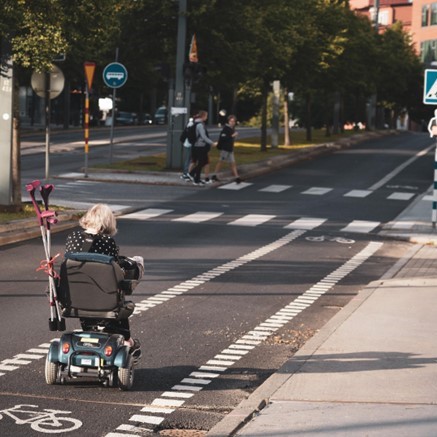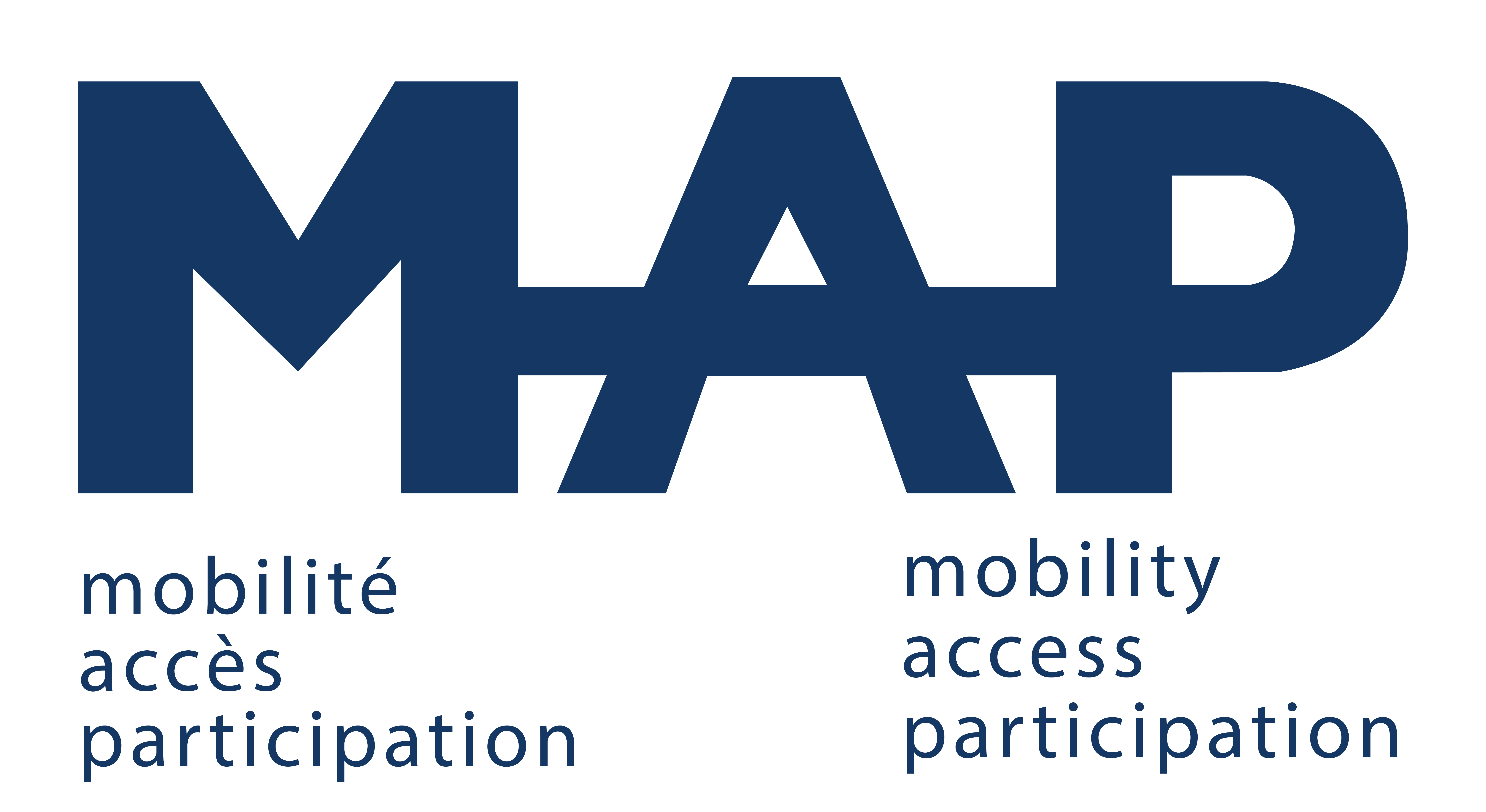By: Janice Chan and Jessie Hall

Do you enjoy cycling? What about using Metro Vancouver’s cycle lane networks? We certainly do, but have you ever wondered who can benefit from cycling infrastructure? Currently in Metro Vancouver, people who use wheeled mobility devices like wheelchairs, mobility scooters, and power wheelchairs are not officially allowed to use cycle lanes. However, many mobility device users encounter challenges using sidewalks because of cracked pavement, missing curb cuts, and other obstructions. A possible safer alternative for these users? Cycle lanes!
Cycle lane regulations differ greatly depending on where you live. In the Netherlands, disabled people can legally use a variety of mobility devices on cycle paths. Mobility scooters in the Netherlands are able to access extensive cycle networks at speeds of 30 km/hour and pedestrian walkways at speeds of 6 km/h. Regulating mobility device speeds to the typical speed of other pathway users keeps everyone safer, and also allows people who use adaptive equipment a greater degree of freedom when it comes to transportation [1].
Now that we know inclusive cycling infrastructure exists, we have to wonder about the degree of access and freedom here in British Columbia. The City of Victoria recently asked the province to officially allow electric-powered wheelchairs and mobility scooters to operate in city bike lanes. Sidewalk use can not only be inconvenient but even dangerous. In a October 2021 Times Colonist article, Peter Foran explained how he fell out of his power wheelchair and broke his hip while riding on uneven sidewalk [2]. The focus of this movement is to improve accessibility for people with disabilities and mobility challenges by expanding transportation options.
For many disabled people, what is needed to facilitate safe and accessible cycle lane use goes beyond changing regulations. In a recent article in The Tyee, seven disabled BC residents shared their experiences and expertise about how to make walking, cycling, and wheeling more accessible and safe for all users. Vancouver resident and power wheel chair user Jacques Courteau shared his opinion that it is often much safer for him to use a cycle lanes rather than sidewalks, and that he finds cyclists accept his presence if he follows the same rules as they do. Victoria resident and disabled cyclist Naomi Wilde pointed out that cycle lane users might assume that a fellow cyclist is deliberately not following the rules (such as not moving over when a bell is rung) instead of realizing they may not be able to follow those rules due to a disability (not being able to hear the bell). Therefore, creating a safe and inclusive environment for all cycle lane users must take multiple approaches, including crafting inclusive regulations as well as providing user education that some disabled cycle lane users may need to adapt the general rules of the road [3].
So what’s next for cycling infrastructure and regulations in BC? This is where we come in! The Mobility, Access, Participation Partnership (MAP) has a new and exciting project, called the Cycle Lane Infrastructure project, which explores the mobility experiences of wheeled device users and cyclists who use urban pathways.
We spoke with Tyrone Scales, a doctoral student involved with the Cycle Lane Infrastructure project, about why this research is meaningful to him:

“This research for me is important on both a professional and personal level. I have worked with disabled people who use wheeled mobility devices and have a partner that utilizes a power wheelchair. I have watched people navigate sidewalks in disrepair or nonexistence to get around and witnessed positive and negative interactions when they prefer or require using a means other than a sidewalk. While not allowed to use cycle lanes officially in British Columbia, mobility device users and other pedestrians are permitted to use the roadway by the Motor Vehicle Act when a reasonably passable sidewalk is not present. I am interested in observing how this project can provide an opportunity to examine why users may have preferences in how they engage with cycling infrastructure when such obstructions are present as well as better inform how to improve the safety and linkages of these infrastructures for both mobility device and other users.” – Tyrone Scales
As cities incorporate sustainable means of transportation into urban development, inclusive and universal designs must be maintained to help ensure accessibility for people with disabilities. To improve these transportation networks and accessibility standards, the Cycle Lane project is collaborating with members of the disability community, cyclists, community organizations including BEST BC and HUB Cycling, and city officials in Vancouver and Burnaby. By exploring the experiences of wheeled device users and disabled cyclists, we hope to improve existing urban pathways, advise future policies, identify areas for future research, and inform the general public about how disabled people use, and would like to use, urban pathways to access their communities.
If you are interested in learning more about adaptive equipment and cycle lane use internationally, see the following links!
- Cycling with Disabilities and Injuries in Copenhagen: A Photo Portfolio
- Wheels for Wellbeing: A Guide to Inclusive Cycling
The MAP Cycle Lane Project will soon be ready to send out a survey open to the general public to explore their opinions on the use of cycle lanes by people who use wheeled mobility devices. We will be sending out more information on this soon!
References
- https://bicycledutch.wordpress.com/2012/12/06/who-else-benefits-from-the-dutch-cycling-infrastructure/
- https://www.timescolonist.com/local-news/victoria-wants-motorized-wheelchairs-mobility-scooters-to-be-able-to-use-bike-lanes-4692927
- https://thetyee.ca/News/2022/10/06/If-Bike-Lanes-Worked-Better-Disability-Community/
